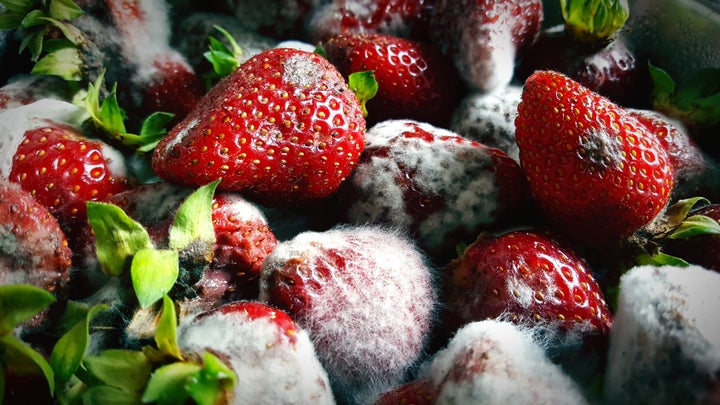
Summer is here, and that means we’re all probably going to be eating a lot more fresh fruit as so many beloved options come into season. We’re talking strawberries, raspberries and blueberries, as well as peaches, plums and blackberries. But all this fresh produce also means that we’re going to be coming across a lot more moldy fruit.
As fruit starts to go bad, mold is almost inevitable. But before you start throwing everything out at the first sign of a little mold, hold tight.
We talked to Marianne H. Gravely, senior technical information specialist on the food safety education staff at the USDA, and asked about the dangers of eating moldy produce (and how to handle mold when we see it).
What happens if we eat moldy fruit?
Most of us don’t intentionally eat moldy produce, but it can happen without realizing.
“If you accidentally eat a piece of fruit with mold, [chances are] nothing is going to happen,” Gravely told HuffPost. “Don’t worry about it. Most people won’t get sick from eating moldy foods. Of course, some people are more sensitive than others. If you develop symptoms or if you became ill, for most people, any illness at all would be temporary. But if you develop nausea that lasts more than a day, see a doctor. But for most, any gastrointestinal upset would be transient.”
What’s the best way to handle moldy produce?
Sometimes the answer to this question is easy. If a peach is completely soft and covered in mold, don’t eat it. But what about a piece of fruit that only has one spot that’s gone bad? Or what about the rest of the strawberries in a box that were sitting next to a moldy berry?
“It’s fine. What I tell people is just to look at all the other berries. Sometimes it’s just dust that’s touching it ― that’s fine, wash it off ― but sometimes there are berries that are kind of clumped or stuck together by the mold ― toss those,” Gravely said.
“It is true that mold has branches and roots that will penetrate the food, so you have to use judgements on how soft it is. The softer the food, the easier it is for roots to penetrate,” Gravely elaborated. “Big strawberries, for example, you can cut off the moldy part ― a healthy margin. But if it’s all soft, don’t eat it.”
The best practice for eating fresh produce is to wash it with water first (stay tuned for a caveat!). This way you’ll get a good look at the fruit or vegetable you’re about to eat and will be able to identify soft or moldy spots easily. If you are washing produce with a tougher skin on it, rub it with a brush.
And here’s the aforementioned caveat: If you bought berries, don’t wash them until ready to use. Water will actually cause them to grow spoiled.
Happy summer produce season!